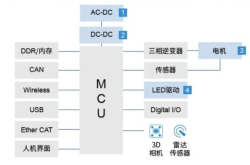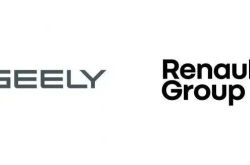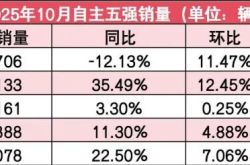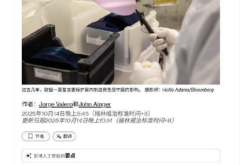Smart Leadership for the Future: Navigating the New Wave and Breakthrough Strategies for AI Smart Hardware Going Overseas
![]() 07/24 2025
07/24 2025
![]() 491
491
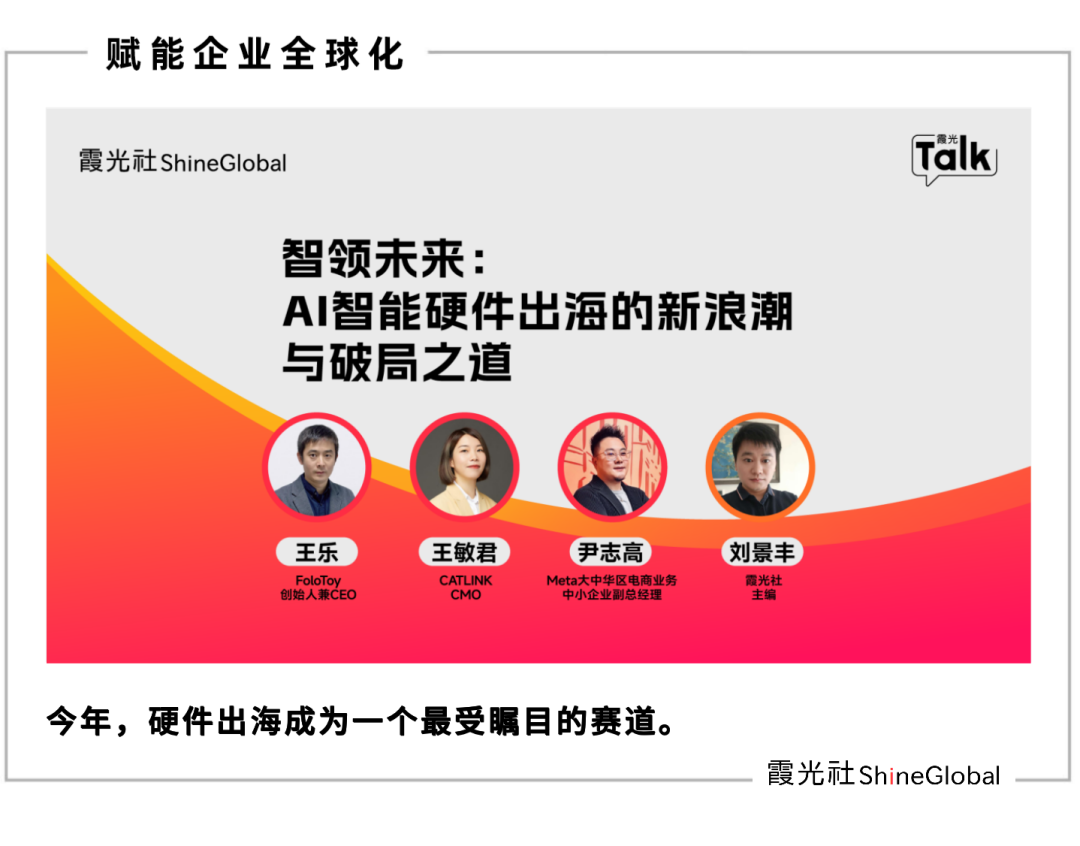
This year, the overseas expansion of hardware has emerged as one of the most compelling trends.
With the rapid evolution of AI technology, the AI smart hardware market has witnessed explosive growth, and AI is gradually permeating every aspect of our lives. Simultaneously, the global influence of "Made in China" is on the rise, attracting more overseas enterprises to explore the realm of AI smart hardware in search of new growth avenues.
However, the path to international expansion is fraught with challenges. Issues such as overseas market dynamics, cultural disparities, user preferences, technological hurdles, and supply chain management pose significant obstacles for enterprises. Navigating the opportunities and challenges of AI smart hardware going overseas has become a critical issue for these enterprises.
On July 16, Xiaguang Club invited senior industry experts and representatives from successful overseas enterprises to participate in a new episode of "Xiaguang Talk," where they discussed the current status, trends, opportunities, and challenges of AI smart hardware going overseas, providing valuable insights and references for overseas enterprises.
Below is a verbatim transcript of the text content, collated and published by Xiaguang Club.
Xiaguang Club: Hello everyone, welcome to this episode of Xiaguang Talk. Today, we delve into the new wave and breakthrough strategies for AI smart hardware going overseas. First, let's welcome our guests. Please introduce yourselves.
Yin Zhigao: Hello everyone, I'm Tony Yin, Deputy General Manager of the SMB e-commerce business in Greater China at Meta. My team and I frequently engage with many Chinese small and medium-sized e-commerce brand customers. Indeed, we've observed numerous new players in the field of powered smart hardware, particularly AI smart hardware, achieving remarkable growth in recent years. So, I'm here today to discuss this with everyone.
Wang Le: Good evening everyone! I'm Wang Le, the founder and CEO of FOLOTOY. In the past, we've applied large models to products like toys, enabling children worldwide to interact with advanced technology.
Wang Minjun: Hello everyone, thank you very much for the invitation from Xiaguang Club. I'm the CMO of CATLINK, a pet smart product company. This year marks our seventh year in operation. So, I might share more about the situation of AI smart hardware going overseas from a market perspective.

Xiaguang Club: Recently, the trend of smart hardware going overseas has been particularly hot, and all our guests are actively involved in this sector. Based on your observations, have you noticed any changes in your respective industry sectors?
Wang Minjun: I officially joined Shenzhen last year to oversee the North American business. From last year to this year, for pet products, especially our company's core product, the cat litter box, the market has seen rapid updates and iterations. From 2022 to 2024, the customer order value has dropped significantly, from around $500-$600 to now possibly around $100-$200. The overall downward trend in retail prices is quite evident.
In terms of changes, I feel that the speed of iteration is very fast. From the perspective of Amazon platform operations, I think Amazon remains quite representative. In 2023, there were only over 200 cat litter box categories, but in 2024, nearly 500 more categories were added. This is good news for pet owners as they have more choices.
However, in terms of innovation, there hasn't been a significant change. The core is that supply chain costs have decreased significantly, for example, products are smaller, so transportation costs are lower. When the overall hardware volume increases, the overall cost also decreases.
So, from the perspective of pet products, there may not be a significant functional iteration, but the cost reduction in supply chain costs is still very apparent.
Wang Le: AI toys are a relatively new phenomenon. Before large models emerged, this type of toy was what we used to call sound, light, and electronic toys. It was born out of this wave of large models, so it's a product that emerged from scratch. Moreover, from a toy perspective, more than 80% of global toys are produced by us, so we have a strong advantage in the supply chain.
Additionally, from the perspective of model application, our country is actually quite advanced. So, whether it's the domestic market or the foreign market, we have some first-mover advantages from various angles of the supply chain.
In terms of products, there is a significant time difference between overseas and domestic markets. For instance, in overseas markets, this type of product is still in a very early stage. Even from the user's perspective, they may not fully understand the differences between this toy and previous ones.
Currently, we've observed that it's mainly offline distribution channels, those previously involved in traditional toys, who are able to recognize this as a new category and product. They also hope to find incremental growth, one way being to increase the unit price of the product, making individual products more expensive. Previously, toys might be very cheap, but now, we can achieve, for example, tens of dollars, which is a relatively significant increase.
This will also change the long-term relationship between toys and users. Toys are no longer disposable; they also have a sense of "Toy as a Service." If used well, users will continue to subscribe and use them, leading to a completely new change in supply and demand relationships. For overseas markets, it's still early, and everyone is in the stage of user education.
Xiaguang Club: You mentioned earlier that there might be a significant increase in shipments this year. I think this also confirms that the entire sector is in a very explosive stage.
Wang Le: Correct. Currently, on the one hand, we do direct-to-consumer (DTC) sales, and on the other hand, we distribute through existing toy channels. So, these are essentially two channels. Since it's a brand-new product, there isn't really what we call an existing or fixed market. It's currently in an early stage, and sellers are basically doing incremental growth. Even various types of toys can be iteratively upgraded in this way.
Xiaguang Club: Is the overseas expansion of AI hardware a technological trend or a genuine rigid demand from overseas users?
Wang Le: We do such verification. Since AI toys are a brand-new category that didn't exist before, it's not necessarily completely driven by technology. But from the current perspective, it is somewhat technology-driven, meaning that we have this model and need to find a suitable application scenario. Currently, globally, whether domestic or foreign, there's a consensus that AI hardware, specifically toys, is a very good landing scenario. There's no doubt that it's technology-driven.
In the process of developing and commercializing our product, we can clearly identify user needs. We often say that many people may not yet be aware of this need. Through our early education, we make users curious, and then slowly educate them to form a pain point.
Our products have been sold to over 30 countries worldwide, and the user personas are very similar: parents buying for their children, and the children using them.
Wang Minjun: Since AI is a new technology, according to previous theories, all fast-moving consumer goods can be reimagined. I think this theory also applies to AI hardware. Why? First, I believe AI primarily addresses interactive relationships.
For instance, when we do marketing, the AI we use is ChatGPT. The core of ChatGPT is that it has a larger knowledge storage capacity, so when I interact with it, it can output things I don't have, because my knowledge is still relatively limited.
Similarly, with AI hardware, all my behaviors can be recorded when I interact with it. It can analyze and adjust based on my feedback, making it very smart. It can understand you very well by perceiving your preferences.
For example, emotions. Now there are many products on the market like emotional pet dolls. They understand their owner's emotions very well, whether they are happy or not. They interact with you through AI perception. Personally, I think technology drive takes precedence, turning everything into something that can interact with people, understanding you better than previous hardware.
Yin Zhigao: Based on my personal observations and industry contacts, these two paths are parallel and happening simultaneously. It's both technology-driven and consumer-driven.
The previous two speakers also mentioned the transformation and recreation of AI across various industries. From the consumer perspective, this will evolve into a track, which is an upgrade of all existing products, belonging to the extension of existing tracks. This is actually consumer-driven, and there is already a clear rigid demand.
Perhaps the most commonly used AI-related product is smart robots, such as cleaning household robotic vacuum cleaners and traditional home appliances that require wiring. Outdoor lawn mowing robots are now very popular. In some particularly large detached houses overseas, a large area can actually be maintained by lawn mowing robots, including pool cleaning robots.
Besides AI, technology drive also includes advancements in categories like batteries. As we all know, a few years ago, battery capacity, including its stability, volume, and weight, could not support (endurance). With the advancement of this technology, users' rigid demands have led to upgrades of existing products, from manual brooms and mops to plug-in ones, to now battery-powered ones. This upgrade and iteration are what we call the existing track driven by technology itself. Of course, the competition will be fiercer because you're entering a track that everyone already knows, and what you may be competing for is your supply chain, pricing power, and sales channels.
But on the other hand, there's the new track that the two of you are pursuing, which is the derivation of new scenarios driven by user needs, such as products that bring new emotional value and companionship through AI, whether they are toys or communicative smart hardware. In fact, they are all new scenarios derived from the expansion of user needs. So, we see two tracks happening in parallel and simultaneously. More likely, from the manufacturer's perspective, it depends on where your starting point lies.
Xiaguang Club: In fact, market demand also反向 promotes technological progress; simultaneously, technological progress can stimulate new demands. The user needs for smart hardware are relatively innovative, so defining user needs becomes particularly important. How do you distinguish between the true and false needs of overseas consumers and define needs?
Wang Le: Whether domestic or overseas, from a human nature perspective, many needs are interconnected. This is undoubtedly true. Everyone wants to pursue a relaxed life, easy work, and happiness, so needs are largely interconnected.
Although we are technology-driven, there are actually too many things we can do. So, how do we find the positioning for our own team or product? This is very critical.
We position ourselves in making products for children under ten years old. The core point here is that in this information age, or what we call the current large model era, children actually don't have a very good terminal. They don't have phones, and even if they have iPads, parents won't let them play with them all the time. Overseas parents often use the term "No Screen," which is actually the same in our country.
So, there's inherently a gap between what society provides and what users have, which is an unsatisfied part. We set the need to a relatively small degree, and it can fill this need gap. It's also a very niche product. Simply put, it can at least replace phones and iPads at home. Children can do some interactive activities with it. Essentially, this already transcends the distinction between domestic and overseas. For our current users in over 30 countries worldwide, parents generally hope to have such a product for their children to use, and at the same time, it can also bring some benefits to the children.
Xiaguang Club: In essence, the core is to identify a common need that transcends geographical boundaries and is more targeted at the group of children for intelligent product development.
Wang Minjun: We are actually quite similar to Mr. Wang Le in that their target is children, while our target is pets. The users are pets, and the purchasers are pet owners. There's also a gap here.
I personally feel that the core of this issue lies in different stages. Our company was established in 2017, and there were no smart cat litter boxes in 2017. It was a completely innovative product, going from 0 to 1. At that time, it completely relied on our founder Jason's own understanding of the market, bringing in his own user experience as a pet owner to create this product.
Up to this year, we already have nearly 700,000 users. Now, we can verify through a large amount of data whether this function is liked by users. Because from 0 to 1, the functional closed loop has been achieved. Now, to go from 1 to 10, the core still depends on user needs.
When conducting functional iterations, we commence by conducting research. Following general marketing research methods, we leverage users' high tolerance for new products and their willingness to allow continuous improvement. We listen to user opinions and suggestions to iteratively release products, testing the technical prowess of our entire R&D team. In the later stages, with consumers already possessing the product, they provide feedback. Simultaneously, we analyze vast amounts of data from our APP to ascertain which functions resonate with users.
Currently, I am based in North America, where Kickstarter and Indiegogo are highly popular. Many new product launches commence with crowdfunding. Prior to crowdfunding, a pre-test is conducted to gather numerous user questionnaires, followed by the crowdfunding process. Positive feedback from user questionnaires typically bodes well for the crowdfunding launch, indicating widespread agreement with the product's need. Conversely, poor pre-test data may discourage product launch due to potential losses. Hence, for some consumer goods, crowdfunding can be a viable channel.
In summary, there are several paths to consider: Initially, you may lead the way by introducing a product with your unique identity, without necessitating complete innovation, during the early 0-to-1 phase. If the market is already saturated with competitors, you can iterate the product based on extensive data, mining numerous comments and insights. Alternatively, you can enter via crowdfunding to obtain user feedback and needs, making the product more market-aligned.
Xia Guang She: Considering the demand, let's address the question of AI hardware going overseas: Should we prioritize establishing a brand or creating a best-selling product?
Yin Zhigao: The sequence of creating a product versus selling it first isn't fixed. First and foremost, consider your product positioning: Are you targeting the upper-mid-range or the low-end market? Where does your brand's potential energy originate?
For instance, some AI-related smart hardware products have a starting price of $1000. Without a brand driving sales, it's challenging to sell. Thus, the initial consideration is your product's positioning, target audience, and price range. If your product is priced below $100, focusing on creating a best-selling product, emphasizing cost-effectiveness or comprehensive functionality, might be more appropriate.
However, if your average order value is higher and you aim for mature markets like the US and Europe, where prices might exceed $300, branding should take precedence. In these markets, despite strong consumer spending power, they place greater emphasis on value for quality.
If your product offers corresponding emotional value and connection, consumers will recognize your brand and might be willing to pay $1000 for the same product. Without emotional value or brand recognition, even a $100 price tag might seem exorbitant. This distinction between cost-effectiveness and value for quality is increasingly significant to consumers. If your product falls within the latter category, systematically building your brand becomes crucial.
The concept of a brand transcends the strength of your product features or the advancement of your technical indicators. It focuses on the emotional value your product brings to consumers. Within this emotional value, what keyword or anchor point leaves the deepest impression on consumers? This forms the strongest connection between your brand and consumers, making them think of your product whenever they encounter that scenario or emotion. Then, your brand is solidified.
Wang Le: After listening to Mr. Yin, it's clear that neither option is definitive. Our product is priced below $100. As an early-stage startup, and considering AI hardware's novelty, we aim to reflect a certain brand identity while maximizing sales.
This aligns with Mr. Yin's logic of a best-selling product. Our product fits this criteria well: It's priced at $100 or even less, and it's well-suited for specific timings, like holidays. The upcoming Christmas shopping season is ideal for such scenarios. It also meets the characteristics and selection criteria of best-selling products, including those promoted through short videos. Hence, in the initial stages, we hope to sell as many products as possible. Building a brand is a long-term endeavor requiring patience and sustained effort.
Wang Minjun: Our highest product pricing might have been around $600 to $700, with an average of around $400. I believe this question is contingent on the founder's background. A supply chain background might lean towards creating a best-selling product faster, while a marketing background might prioritize branding.
I agree with Mr. Yin. We need to walk on both legs, with varying focuses at different stages. When we started in 2019, we focused on creating a best-selling product due to our boss's supply chain background. Coincidentally, Douyin (TikTok) was emerging then, and our AI voice-activated litter box gained popularity. This brand-oriented content led to a sales explosion, with over 1000 units sold out in just 30 seconds. So, it depends on resources.
Currently, the market is becoming increasingly competitive. If your product boasts advanced technology, it will sell itself. Many ponder whether to invest in product promotion or branding. If you don't excel in product development, you must excel in branding.
Take Insta360 as an example. They have an inherent advantage with cameras, and videos can be shared. Ideally, both aspects should be combined. If your product has unique features that consumers are willing to share, and you identify this during early R&D, you can reduce marketing expenses and rely more on UGC for promotion.
Xia Guang She: To achieve breakthroughs overseas, apart from the product itself, how should AI hardware choose channels, particularly for brand promotion? What are some notable points?
Wang Minjun: Let's discuss North America. The US market channels are mature, encompassing high-end, mid-range, and clearance brands. Any product entering the US market will have various channels to aid sales, but precise channel selection is key.
Take pets as an example. There are specialized vertical channels like Petco and Petsmart, as well as comprehensive retailers like Walmart. Online, there's Amazon, and offline, there are community stores and small shops. Various Palazas across the US offer small pet stores and hospitals. The entire US channel system is mature. The core question remains: What is your brand positioning? Are you high-end or mid-range?
Different positioning corresponds to different channels. In the US, another point to note is that offline channels require resource and connection accumulation. Unless your product has a standout feature and PR to inform buyers, you'll likely rely on online channels like Amazon or independent sites. They comprehensively assess data from various channels, including your overall branding and US investment, to decide on offline channel entry.
Currently, offline channels serve as a marketing platform. You must first enter their online channels for sales. If the performance is good, you can then move to offline channels. Offline store efficiency is limited. For instance, a 100-square-meter store might only have ten positions. Giving it to you means denying it to someone else. Thus, the crux is whether your overall online sales can support it. They consider store efficiency; if the performance is good, they'll offer you an offline channel.
North America has mature channels, but the company's startup positioning dictates entry strategy. From my observation, it might be easier to start online, increase presence, and then move offline.
Yin Zhigao: For overseas expansion, while the market is vast, the path is relatively long. Particularly the offline aspect mentioned by Ms. Minjun. Offline isn't like domestic recruitment; entry isn't straightforward. Many offline channels in mature markets have high thresholds due to stringent product selection, especially in large malls. Therefore, I recommend starting with online channels for a lightweight attempt. Online channels have lower infrastructure and trial-and-error costs.
Second, you can deploy more lightly and switch markets with ease. For example, your product doesn't necessarily need to launch in North America first. Many smart hardware sellers start in Europe or even Southeast Asia before moving to North America. So, North America doesn't have to be the initial market. Online expansion offers greater flexibility in market switching.
Regarding online channels, there are numerous options, now more diverse than ever. At Meta, we excel in cooperating with overseas enterprises on self-built independent sites.
Independent sites offer advantages: They're closer to private domain traffic, directly related to your brand, and offer strong bargaining power. Entering e-commerce platforms might have pricing restrictions, like requiring the lowest price across all channels, weakening your pricing ability and bargaining power, especially for new brands or sellers.
Independent sites don't have these issues. With good operation, whether through private domain traffic or purchased advertising traffic, pricing is entirely in your control. Of course, this requires self-fulfilling delivery services. E-commerce platforms offer full or semi-managed services with lower setup costs. Each has its pros and cons.
I suggest small to medium-sized sellers starting out choose cost-effective and flexible online channels. After establishing a user base and sales volume, like the companies of the two Mr. Wangs, they'll inevitably move towards building their own brands and independent sites. This is a process.
Over the past one or two years, competition has intensified in this area. More players from domestic companies going overseas are entering various subcategories. Mr. Wang also mentioned price wars, necessitating multi-channel operations and strategy balancing. Additionally, in the overall environment, operating through multiple online channels is essential. An independent brand site's advantage in such dynamic situations is that, with autonomous control over users and pricing, your ability to resist or respond to changes is stronger.
Xia Guang She: Mr. Wang Le, your products are also primarily sold online. How do you choose channels?
Wang Le: We're somewhat unique. First, we have our own brand and are primarily online. We haven't officially entered Amazon yet but are in the process. We initially sell on our independent site.
Being in the toy category, overseas offline distribution channels are mature, allowing us to reuse existing channels. China is the main supply chain source. Many countries, particularly in Europe and North America, source products from China. We offer them a potentially higher-value option. This new toy category might not use our brand but enter original channels for sales through ODM or OEM.
For our own brand, as Mr. Yin and Mr. Wang mentioned, we started online and progressed step-by-step according to our overseas expansion rhythm.
Xia Guang She: Is the independent site your primary channel?
Wang Le: For a small startup like us, an independent site is easier to start since everything is under our control. We have suitable private domain traffic, SEO, and community, so we can get started. In the long run, we aspire to run a brand and reflect product sales performance online, eventually entering larger platforms like Amazon. Thus, we'll proceed step-by-step as planned.
Xia Guang She: Regarding overseas promotion, in recent years, competition has intensified, leading to rising overseas traffic costs. Amidst general cost pressure, what methods, tools, and practices can you share to achieve differentiation and overcome advertising dilemmas?
Wang Le: We have a dedicated team for overseas expansion. As a new brand in an exploratory phase, each team's background or genes differs.
Our team primarily focuses on software and hardware development. During the initial stages of brand and product promotion, we extensively engaged in public building, fostering connections with numerous overseas developers. This approach has the advantage of generating substantial User-Generated Content (UGC). People can customize our products, write prompts, alter sounds, and achieve excellent results. This significantly facilitated our product promotion efforts in the early stages.
Furthermore, in the realm of SEO, there is an increasing emphasis on GEO. Analyzing our website's traffic sources, we observe a substantial influx from ChatGPT recommendations overseas. From a technical perspective, how do we secure these ChatGPT recommendations? Understanding the technology is crucial. We must create abundant content, be it text or video, to ensure AI comprehension. Among AI toy categories, we likely possess the most extensive and comprehensive textual content on the internet, encompassing nearly all AI products. Presenting AI with entertaining content naturally leads to recommendations.
We must leverage technological advancements effectively. As technology entrepreneurs, we possess a slight advantage in this regard. However, in the long run, I believe the market's laws will prevail, necessitating patient brand management.
Yin Zhigao: I'll discuss this from the e-commerce's three axes: people, goods, and places.
People: Taking myself as an example, three or four years ago, approximately 30% of my purchases were repeat buys. I followed recognized brands and regularly ordered from their online stores or proprietary websites. Another 20% stemmed from recommendations. The remaining 50% involved daily consumables, where I actively searched for product keywords on shopping websites, compared options, and placed orders. This represents most people's online shopping behavior from a few years ago.
Currently, active product searches account for only about 30% of my total spending. Another 40% arises from periodic repeat purchases due to a fixed consumption pattern. The remaining 30% comes from impulse buys. While on business trips, browsing short videos or content, I might see something interesting recommended by others and place an order. During my fragmented travel time, I didn't intend to shop. Upon reflection, I found that 30% of my spending now stems from such unplanned purchases. This is also a trend we observe at Meta. From a human perspective, it has shifted from shelf-style display e-commerce, where consumers search for products, to consumers making purchases anytime and anywhere.
As a brand or producer, how do you appear when consumers have emotional needs and convert them into buyers? This presents a new marketing opportunity. At Meta, we call it "Creative is the new targeting."
Previously, precise marketing was prevalent, with clear labels. For instance, if I'm into pets, I'd follow pet bloggers or pages on social media like Facebook and Instagram, where I'd see ads. But now, you might not need to follow; instead, creativity matters. If I sell pet or toy products, I must consider consumer usage scenarios and emotional values they fulfill, then create content accordingly. Everyone is an editor, and through this content, consumers are moved to place orders spontaneously.
This new marketing model might be overlooked by many domestic brands going overseas. They still use traditional shelf-based promotion.
Goods: When building marketing value, focus not only on product usage but also on storytelling. Crowdfunding's popularity in consumer electronics stems from each product's story. When crowdfunding, consider the entrepreneurial and original story backgrounds. From a storytelling perspective, our marketing scenarios involve thinking about consumer usage scenarios, emotional values at different stages, and product trendiness and coolness (perhaps appearance, design, or IP attributes).
Combining these points, we have the People-Product-Trend formula. For instance, North America has its trends, and Europe has its own. Under these modules, different combinations yield numerous marketing ideas to create content and market your goods.
Places: The field of marketing. Meta has heavily invested in AI for quantitative marketing. Our advanced advertising products can automate processes. You only need to specify your marketing budget and requirements; the rest is handled by Meta. Our AI advertising products and tools make adjustments, with creative material as the only variable.
We also have AI tools to optimize material. For example, in small language countries, use our AI to generate copywriting and different product image versions. Many AI tools exist on the marketing tool side, proven more efficient than human delivery.
A leading smart robot brand we recently collaborated with used our intelligent advertising A+SC. With a 15% budget increase, cost per acquisition decreased by 57%. Many advertisers rely on human control when going overseas, adjusting budgets based on experience. For instance, allocating more budget on weekends to control costs and increase ROI. Now, Meta's intelligent advertising tools operate 24/7 based on your needs, maximizing ROI with sufficient creative material.
Wang Minjun: I agree with previous guests. AI and GEO (formerly SEO optimization) are crucial. AI search brings nearly 20% of traffic to independent stations or purchase channels. Google plans to build its AI engine, focusing on this area. AI search may affect future traffic distribution.
I also agree with Mr. Yin. At Alibaba, people directly entered the app to search with strong purchase intent. However, daily orders resulted from content attraction. Thus, content, especially short videos, increasingly drives direct ordering and transactions.
This trend is similar outside platforms. Short video influence is rising. Our boss has a supply chain background, limiting advertising tool use. We invest more in Meta and Google, focusing on content promotion on Meta and conversions on Google.
Xia Guangshe: After discussing the front end, let's consider the back end. AI hardware differs from other products, requiring strong technological and manufacturing attributes. It tests both technology and supply chain foundation. What challenges do FOLOTOY and CATLINK face when going overseas?
Wang Minjun: Focusing on the American market, logistics is a core challenge. Flexible inventory turnover demands a responsive supply chain, involving flexible spare parts and production. For example, shipping within two weeks. Thus, our supply chain requires high flexible production capacity.
As our products are large, logistics costs and overseas warehousing control are critical. I strictly require a 45-day turnover for fast speed and cycle control. This demands high stock preparation and production capacity from the supply chain.
Cost control is also vital. Competition in the litter box market has intensified since 2022, with prices dropping significantly. This requires strict cost control in the supply chain, including backend logistics. Controlling packaging volume and weight without compromising user experience is challenging for large items. Thus, the supply chain must excel in cost, flexibility, and quality control.
For 3C digital products like ours, after-sales issues are complex. Without a North American after-sales center, we rely on online calls and emails. If the supply chain controls quality, after-sales problems diminish, easing the team's workload. For me, the supply chain involves flexible production and spare parts, cost control, and quality assurance.
Wang Le: I share similar sentiments with Ms. Minjun. As an early-stage startup, we gradually address encountered issues.
Our toy products face challenges in transportation, express delivery, and warehousing due to their large size and diverse categories with extensive SKUs. We consider using unified packaging to control volume. For hardware production, estimating sales volume, stock preparation, and production cycles are crucial.
Warehousing and after-sales are equally important. We hope the supply chain controls quality to minimize after-sales issues, critical as they can render a product unprofitable, demanding more energy and resources.
The domestic supply chain's advantage is crucial. Despite increasing competition and decreasing product prices, a profit margin exists, benefiting from our country's strong supply chain. Previously, our supply chain served overseas brands, which charged higher prices. Now, Chinese toy brands and our supply chain have the opportunity to produce valuable products for our own brand.
Xia Guangshe: FOLOTOY started overseas and returned to China, while CATLINK began in China and expanded to Southeast Asia and the US. Please discuss your localization strategies.
Wang Le: Our product changes in domestic and foreign markets follow technological iterations. Initially, large models weren't commercially available in China but were early in overseas markets, presenting an opportunity. As domestic models like Doubao and Deepseek became user-friendly, and C-end users increased, cognitive education improved. We found that domestic and foreign markets could be promoted simultaneously, a process evolving with technological trends.
Wang Minjun: Our approach is relatively straightforward. Our core strategy revolves around finding agents. Given our presence in 119 countries, many of which are English-speaking, we handle markets like the United States ourselves due to its sheer size and the need for accumulated experience. Similarly, we manage the Chinese market ourselves, as we have a deep understanding of the local brand. For other markets, we rely on agents.
The rationale behind this is simple. Firstly, we aim to control costs and enhance human efficiency. Secondly, the diversity of languages and dialects, coupled with the varied cultural landscapes of different countries, necessitates local expertise. For instance, in many small European countries, English alone is insufficient; the local mainstream language is essential.
For a small company like ours, recruiting branding professionals for each language would be prohibitively expensive. Language is crucial for brand communication, and while AI provides support, human verification remains indispensable.
Globally, people's love for cats is universal. Our product's core function, automatic litter scooping, addresses a universal need. Additionally, local agents offer unique advantages, such as access to local resources that we might lack. Expanding into these resources requires substantial time and effort. Initially, we considered managing European operations ourselves but found that taxes like European VAT and other costs were too high, prompting us to rely on agents.
Agents facilitate quicker local market penetration and possess valuable local resources, including offline stores. Many of our European offline channels are expanded through agents. In the United States, while we operate independently, offline store presence remains limited, with only a few community channel stores. Entering large retailers like Best Buy requires networking and a local presence, which takes time to establish.
Xia Guangshe: Do agents provide significant feedback for localization?
Wang Minjun: Absolutely. For instance, we initially had a single litter box, and our APP was very basic, with only data recording and warning reminders. In 2020, our first overseas foray was in Southeast Asia, not Europe or the US, due to its proximity and rapid feedback loop.
An incident that year highlighted this: a Thai user with 18 cats benefited from our product's warning feature, which saved one of his cats. He sent us a thank-you letter, inspiring our brand story and reinforcing our brand value, which we extended to water dispensers and feeders.
Agents provide direct feedback, as we carefully select those who are genuinely passionate about cats and possess pet resources. They offer professional insights, translating local usage habits that we might miss.
Xia Guangshe: I see. In the early stages, leveraging good agents is more efficient than managing operations independently.
Wang Minjun: Yes, the cost-effectiveness is better in the initial phases.
Xia Guangshe: How do user groups in different overseas markets differ in their concerns and attitudes towards AI hardware products?
Wang Minjun: I attended CES this year, where AI concepts were prevalent in product development. For example, I saw an AI water dispenser, but the water itself was ordinary. This year, I felt that AI's application-level development was still limited, except for advancements in smart glasses. Concepts drive practice, and next year's CES might showcase more AI products. With the evolution of large models and multimodal videos/audios, I anticipate a flourishing of AI applications in hardware over the next few years.
I value AI's integration with automation. AI enhances human efficiency, as does automation. Automation follows standard SOPs without human verification, while AI adds a layer of imagination. For instance, I now use AI to review and correct my contracts before submitting them to the legal department, streamlining a process that once required multiple rounds of back-and-forth.
The core of automation lies in standard SOPs, eliminating the need for human verification. Autonomous driving is an example of SOP combined with AI, interacting with traffic lights and other elements for point-to-point delivery. This is a promising solution.
Wang Le: I agree with Minjun's insights on the future of AI hardware. Most products were conceptual, but conversational AI hardware has seen real-world success due to mature infrastructure and speech processing. From simple conversational toys to our Sunflower Robot, which features motion and automated execution, we're witnessing evolutionary advancements.
We've seen various AI products, from glasses and headphones to wearable devices and autonomous vehicles. The experience will continue to improve, and AI will be more widely applied, not just in open fields but also in closed environments. As AI models and chip technology evolve, they'll integrate into more scenarios.
Ultimately, AI should be imperceptible, enhancing our lives without us being aware of its presence. This will lead to a superior user experience.
Yin Zhigao: There are notable differences. In mature markets like Europe and the US, Americans emphasize AI's novelty and fun, seeking to enrich playability and endurance. Europeans, on the other hand, focus more on practicality, how AI can enhance efficiency.
Marketing strategies reflect these differences. While Europe and the US are both developed markets, the same approach yields varied results due to differing consumer mindsets. Europeans prioritize practicality, seeking AI-integrated products that improve convenience or efficiency. In North America, innovation, fun, and novelty are more appealing, reflecting an openness to trying new products.
Before expanding overseas, hardware companies should closely analyze local markets, leveraging tools like Meta for trend insights. Understanding consumer preferences for novelty and fun can guide marketing strategies.
Xia Guangshe: What are China's characteristics/advantages in AI hardware exports, and how can Chinese enterprises leverage these?
Wang Le: Over the past decade, China's supply chain in intelligent manufacturing has evolved, giving it a significant advantage. Many products, when produced domestically, offer high quality at low costs.
Another key advantage is talent. China's large population includes abundant industry and engineering talent. Our knowledge acquisition and technology application, especially in civilian scenarios, are on par with foreign countries.
This combination of talent, technology, and application enables strong product capabilities. In 2013, we often discussed "copy to China," particularly American models in hardware, software, and business. China's vast consumer market and growth potential made it an attractive destination. Now, we talk about "Chinese originality," as many applications and brands have gained global recognition through practical accumulation.
From a hardware perspective, China's advantages are pronounced. Regardless of hardware type or origin, China is a likely manufacturing hub, especially for civilian enterprises reliant on China's supply chain. As a Chinese team, we should leverage this to create world-class products.
Wang Minjun: I see several layers of advantage: talent, supply chain, and micro-applications.
The talent aspect is gaining international attention. For instance, when the US increased taxes on Chinese goods, Apple CEO Tim Cook noted that while Apple might have 20 engineers in the US, it could find thousands in China. China's talent pool is unmatched.
Another advantage lies in the supply chain's quality and cost. Even with the tax hike, many companies couldn't do without China due to inferior supply chains elsewhere. China excels in refined supply chains, offering the best quality-to-cost ratio. Many supply chains are thus anchored in China due to its talent and optimal quality-cost balance.
Lastly, China excels in micro-applications, focusing on practicality. For example, iFLYTEK's AI applications at airports, which provide real-time language translation and information, demonstrate China's rapid innovation and effective application of AI technology across various points.
In summary, China boasts significant advantages in talent, quality, and micro-applications, positioning it well in the global AI hardware landscape!

